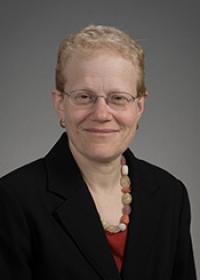
A division becomes a department
On September 16, 2017, the Division of Emergency Medicine will officially become the Department of Emergency Medicine. They have been a division of the Department of Medicine for 20 years.
In 1997, the Emergency Medicine Service at the University of Washington Medical Center became the fourteenth division of the Department of Medicine. Dr. Mickey Eisenberg led the division until 2003, when Dr. Kathleen Jobe was appointed acting head.
In April 2009, Dr. Susan Stern joined the department as professor of medicine and the new head of the Division of Emergency Medicine. She will become the chair of the UW Department of Emergency Medicine.
A graduate of Tufts and the Case Western Reserve University School of Medicine, Stern completed a residency in emergency medicine, chief residency, and fellowship at the University of Cincinnati Medical Center before joining the faculty at Michigan in 1993.
Stern’s clinical and research interests include resuscitation from traumatic hemorrhagic shock, traumatic brain injury, and medical education and career development.
Her honors and awards include the Advancement of Women in Academic Emergency Medicine Award, Impact Award and the Young Investigator Award from the Society for Academic Emergency Medicine, the AAMC Mid-Career Women’s Faculty Development Seminar, and a Citation for Excellence in Medical Student Teaching at Michigan.
During her eight years as division head, the division has seen unprecedented growth in faculty and educational development, an integrated clinical service, and increased research funding.
Faculty and educational development
Since 2009, the faculty has grown from 12 to 50 full-time faculty, and the division has developed an Emergency Medicine residency program and three fellowships: EMS, Medical Education, and Research.
The Emergency Medicine Residency Program welcomed its inaugural class of six residents in 2011 and its first full class of 12 in 2012. This is already a highly competitive and sought after program with graduates populating the WWAMI region as well as working globally.
Since 2015, residents have had the opportunity to participate in rural Emergency Medicine WWAMI rotations. Additionally, emergency medicine is a 4th year required rotation for medical students and currently sixteen WWAMI sites (up from three sites in 2009) now support the EM clerkship.
Approximately 25 UW graduating medical students choose EM as their specialty each year and a formal Faculty Career Advisor (FCA) and Career Development Program for students seeking a career in emergency medicine has been implemented.
Point of Care curriculum
The division has also designed a comprehensive Point of Care (POC) ultrasound curriculum, training and quality assurance program. The EM POC ultrasound team have provided over 700 hours of training through eight unique courses offered to a wide range of trainees in varied clinical disciplines throughout the institution.
Clinical and research initiatives
Clinically, the Division of Emergency Medicine has served as a model for system integration. Prior to 2009, emergency medicine faculty provided clinical service exclusively at Harborview or UWMC and were not integrated academically. Currently about 50 percent of the faculty work clinically at both sites. Additionally, all academic and many clinical initiatives are now integrated across both medical centers, providing a more seamless experience for the residents who work in both settings, enhanced opportunities for faculty development and a better experience for our medical students.
The division has also significantly increased research and scholarly activity and now ranks in the top 20 nationally in research funding, number of grants submitted, and number of grants awarded. EM faculty are involved in discovery related to trauma and resuscitation, cardiac arrest, sepsis, injury prevention and addiction, health services, medical education, quality and safety, team communications and function, global health, and ultrasound.